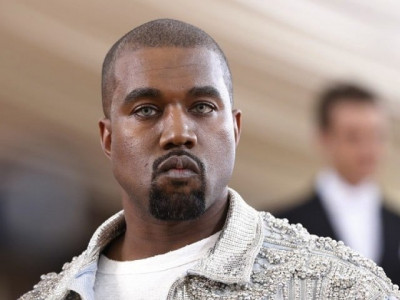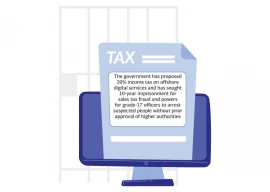
He was speaking against the background of the recent visit to New Delhi and Attari by the commerce minister, confirming an initial agreement between the two countries to enhance bilateral trade and soften the visa regime. The two sides are preparing negative lists of commodities so that free trade can take place and they can begin the transformational process to dwarf long-standing bilateral disputes. Beyond the bilateral focus, there is the prospect of South Asian trade across Pakistan to Central Asia and across India to East Asia.
Are we standing at the gateway of a big change? A look at history tells us that wars and trade have always brought about big changes. In our day, wars are difficult to wage as the global order is firmly bound to the status quo. Trade remains the only medium of radical change. It removes the national frontier as a locus of tension and conflict, and reintroduces it as the medium of developmental synergy between sovereign states. Pakistan anticipates big traffic on the roads that traditionally connected the two states and is already expanding the road leading to the Wagah border.
Initially, the attraction of this new project is for those industries and traders who export: Pakistan expects to export 1,650 items — woven fabrics, garments, bed linen, footwear, dates and chickpeas. India expects to export 3,286 items — automobiles, diesel trucks, black tea, pneumatic tyres, antibiotics and reactive dyes. Pakistani exporters will gain from the negative differential between the currencies of the two countries: the Pakistani rupee is half the value of the Indian rupee. India expects Pakistani investments to land in East Punjab pending the bad law and order situation in Pakistan.
President Zardari cannot have missed the rapid progress Bangladesh has made with respect to the opening of multiple routes connecting India with other neighbours across its territory. It has crossed the psychological barrier that bedevilled Dhaka because of the primacy of bilateral disputes in its relations with India. Bangladesh intends to provide transit facilities to India, along with Nepal and Bhutan by March 2013. It has already allowed a wide transit road joining India with its states in the northeast.
Opponents of trade opening often say that there is no big potential in the free-trade regime that is being inaugurated. After all, the export potential from India to Pakistan is $9.5billion, while that from Pakistan to India is $2.2billion. It is apparently nothing compared with India’s trade with China at $75billion. They say trade with Central Asia through Pakistan will be of small value because Central Asia does not have the population that could be counted as a big market for Pakistani and Indian goods. This position is belied by the rising energy needs of South Asia and the potential of energy export from Central Asia based on regional surplus now going from Central Asia through Russia to Europe. If Pakistan looks closely at the smuggling of its agricultural commodities through Afghanistan, it will realise that a regional network of roads to Central Asia will transform Pakistan’s economy, which is now admittedly strong in agriculture. A landlocked Central Asia is bound to grow economically with higher standards of living, which means it will need trade outlets to the sea through Pakistan.
Pakistan is shifting from its ‘military’ view of geopolitics — prevent transit trade to gain advantage — to a civilian view, which allows transit to gain economic advantage and prosperity of the people. The new paradigm is late in coming and this delay is being felt by Pakistan, as other South Asian states are currently posting high growth rates.
Published in The Express Tribune, April 23rd, 2012.
COMMENTS (24)
Comments are moderated and generally will be posted if they are on-topic and not abusive.
For more information, please see our Comments FAQ


1737550160-0/BeFunky-collage-(21)1737550160-0-165x106.webp)

1719319701-0/BeFunky-collage-(10)1719319701-0-165x106.webp)



1737452260-0/Gaddafi-stadium-(2)1737452260-0-270x192.webp)










Doing trade with each other is a win win situation for both sides and more importantly it would generate peaceful atmosphere between the two countries.
is this a tactical or strategic change in Pakistan's attitude towards India. I am bewildered and would like India to take baby steps in this direction until dust settles in Afghanistan post 2014Indo-Pak trade is no doubt a welcome move, but being a Pakistani, we cannot attain a balance in trade with high energy and labour costs as compared to india. This trade issue should be analysed purely on the commercial basis rather just on neighbourhood love.
@Ali Tanoli: "Its not easy to get some profit from hindus….." - only thing come to mind after reading your comment is laugh at you...
Please watch the below video posted by a westerner who came to do business in one of the TechPark in Bangalore...
http://www.youtube.com/watch?v=Uffu2lzhUPc
Also India is not the country what you have in your mind, we have moved away from our Licence Raj and backwardness of 80's era to a free market dynamic economy, and today we are even able to attract talents from west to work in India, below is the video testimony to that...
Breaking tradition, top American graduates are heading to India to find jobs and opportunity.!!!!
http://www.youtube.com/watch?v=NPDHfqpEVD4
We should learn from our dear Chinese friends - business comes first!!
Ali Tanoli : Did u know that it is not easy to get some peace from muslims esp muslims of pakistan
@Allah Ditta: Actually thats the whole point. From India's POV, the moment we are dependent on each other, Pakistan is going to think twice before it supports any activities against India, and since India is looking for a more safe and prosperous environment, the help from Pakistanis are always welcome. From Pakistanis POV, here is a market which is "greedy", we want more clothes, more cement, more minerals and you have got it. We can always provide good price for the resources, so that will free you from the clutches of US, IMF , WB. So its a win-win situation. But yes one incident can change things,
@Ali Tanoli Its not easy to get some profit from hindus…..
Poor illiterate guy...equates Pakistan with muslims and India with Hindus....
This is what happens with madaradssa education.
@Praja tantra
Thank u for the comment, time will tell :-) Indo-Pak trade barriers all removed by the end of the year who would have thought!!! :-) Have u ever been to Pakistan?
I am amazed with the lightening speed Pakistan is moving to normalize trade with India. Pakistan is going to float tenders for electricity in India, Pakistan is requesting (have been denied before) for Indian Railway engines. Pakistanis are planning hotel chains, shopping malls in India. Indian railways are refusing to lease engines because they can guarantee safety of Indian engineers. Everyone thought that Indian will come first and take over the market. But it looks like that all Pakistani upper class wants to move and invest in India. I have not heard even a single investment proposal from Indians. Indians are saying "yes' to trading but no to Investments in Pakistan. Let see what happens... Indians political stability is very week and fragmented with so many political parties and power centers. India and Pakistan are not western democracies. Public opinion can change in a minute. And going to back to square one is just one incident away.
@Ali Tanoli
Your comments are always meaningless. Why the word 'hindu' here?
@Naseer Muhammad: Nice jokes you tell.
A great Ed and very pragmatic indeed. The problem with Pakistan is that peace, trade, cultural exchanges and friendship all give nightmares to our rightwing/mullah/military alliance. Their very existence is based upon hatred toward India and that India is the worst thing in the world. With the opening up of the borders and open trade Pakistanis would see the truth clearly and realize that there is no need to waste billions of dollars on the arms race. They would see the fact that more Muslims live in peace and harmony in India than in Pakistan. Even if we take all the riots in India, more Muslims are killed at the hands of Muslims each year in Pakistan than in India. We have practiced hate for over 60 years let us give peaceful coexistence a chance!
@Ali Tanoli: " ... Its not easy to get some profit from hindus….. "
Do you have anything nice to say about Hindus ?
This editorial, like all entertainment tonight editorials, was all over the place. While trade is beneficial, it should be looked at strictly in economic terms and in terms of interest for Pakistan. Pakistan competes in a lot more products than given credit for. To expect or hope for hackneyed notions of political change belies the reality of geopolitics throughout the world. Increased trade does not decrease tensions, nor is it a solution to issues. Can it improve the atmosphere? Maybe. It is strictly in the interest of Pakistan to gain an export market in which it can compete in terms of quality and price. There are also economic dangers in trade. This is not a panacea either for the economy of Pakistan or for the political issues present in relations between countries. Central Asia has nothing to do in terms of Pak-India trade, except for as providers of energy. No need to bring in new players which will hurt the interests of Pakistan. Don't know where ET got that other states are posting high growth rates as all countries are slowing down, mainly because they're consumption driven which is unsustainable due to lack of investments.
Ali Tanoli, It is not easy to get profit from Hindus right. it is impossible to get profits from the Chinese, for whom your entire nation is bending over backwards. There is not a single thing you can sell to the, that the Chinese will want, only your natural resources. In India, the cutlural simialrities will mean, that many of your unique products will sell like hot cakes. Pakistan fought with India for years over 1000 sq miles of Siachen, yet another part of kashmir was gifted to the chinese, close to 5000 sq miles, free with nothing in return. Yellow race wont be so emotional, when they have no utlity for Pakistan, Higher then Himalayas, deeper then sea could mean less to them. So for your God damn sake, stop this non sense or years later, like a broken old man, you will have a broken nation.
There is no compulsion in trading and nobody is forcing you to do so. Let both countries try it out for a couple of years. If it works, continue trading or else back out from it. Indian middle class is almost double the size of population of Pakistan. From the point of view of a young country like Pakistan the trade prospects are enormous.
BRAVO!!!!!!! Great article I believe In 20-30 year Pakistan will be the Germany of the world. We have the talent, tenacity and the courage to do so!!!! I am a British Pakistani (Braki) and I am writing a book Braki: British Pakistani, Muslim & Gay . Pakistan needs and must be apart of the civilized and evolved world. With the will of God homosexuality will be legalized in Pakistan. A central tenant of Islam is that only God can judge us and all of, *that is all of* Gods creation is beautiful and precious!!!! God Bless :-)
Trade should be limited to basic commodities
Its not easy to get some profit from hindus.....
Trade between China and the US is counted in the tens of billions but the rivalry between these two countries grows every day and the phenomenal rise of China gives countless Westerners sleepless nights. So much for your theory.
One of the major factors that can improve our ties with India. Economic Dependency upon each other will reduce military tensions and political misunderstandings.